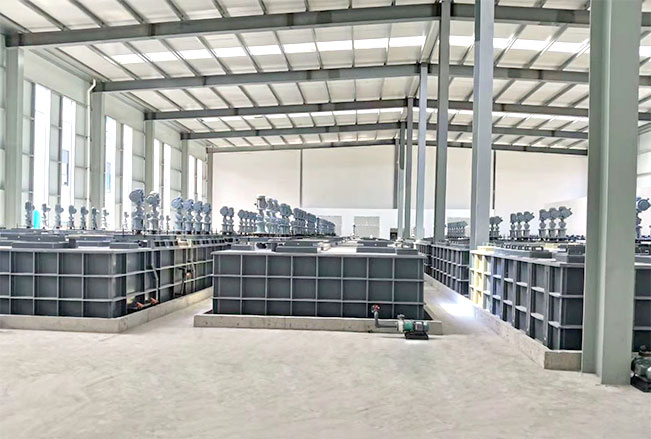Weirs and baffles significantly improve the phase separation process in a mixer settler by enhancing fluid control and promoting efficient stratification of the immiscible phases. Weirs, positioned at the outlets of the settler section, serve as barriers that regulate the flow rates of the separated phases. By maintaining a consistent overflow for the lighter phase and an underflow for the heavier phase, weirs help establish a stable interface between the two phases. This controlled flow prevents the phases from remixing after separation, ensuring that the lighter phase (usually the organic phase) and the heavier phase (typically the aqueous phase) are drawn off cleanly and separately.
Baffles are strategically placed within the settler section to direct the flow of the liquid and minimize turbulence, which is crucial for effective phase separation. Turbulence can cause mixing of the phases, leading to inefficiencies in the separation process. Baffles work by breaking up the flow and creating a more laminar flow regime, which allows the lighter phase to rise smoothly to the top and the heavier phase to settle at the bottom. This structured flow reduces the chances of emulsions and ensures a clear separation.

Furthermore, baffles help in controlling the flow patterns within the settler. They prevent the formation of vortices and dead zones where the mixing of phases could occur. By guiding the liquid flow, baffles ensure that the entire volume of the settler is used efficiently, promoting uniform settling and separation. In some designs, baffles can also help in distributing the inflow evenly across the cross-section of the settler, enhancing the separation efficiency by preventing channeling.
The combined action of weirs and baffles thus optimizes the phase separation process by providing a stable, controlled environment that maximizes the gravitational settling of the immiscible phases. This results in higher purity of the separated phases and greater operational efficiency of the mixer settler. Their role is critical in maintaining the delicate balance between mixing and settling, ensuring that the mixer settler performs its intended function effectively across various industrial applications.